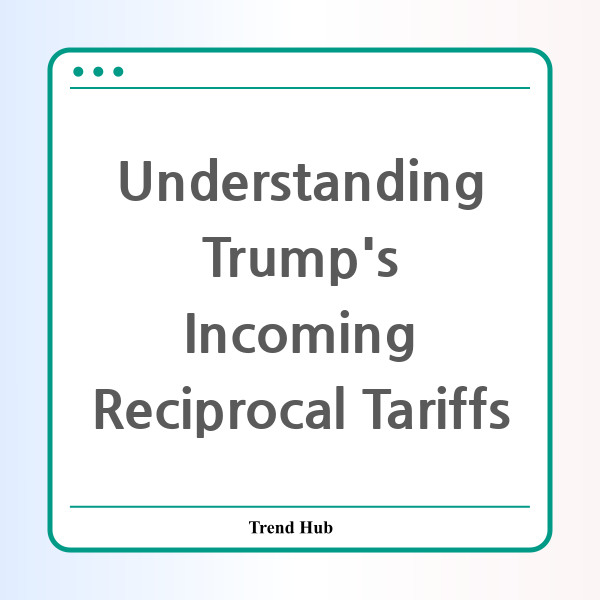* This website participates in the Amazon Affiliate Program and earns from qualifying purchases.

As we enter a new chapter in U.S. trade policy, the looming question on everyone’s mind is: how will the recent developments regarding reciprocal tariffs affect American industries and the global market? The Trump administration is preparing to implement reciprocal tariffs aimed at countering duties imposed by other countries on U.S. imports, a move that many experts fear could escalate into a significant trade war.
On February 12, Donald Trump’s trade advisors were finalizing plans for these new tariffs, which he announced as a response to the duties levied by numerous countries on American goods. In particular, Trump's decision to impose tariffs on all steel and aluminum imports starting March 12 caught many off guard, sending ripples through various sectors that rely heavily on these materials.
This bold move is designed to protect American industries, but the implications stretch far beyond domestic borders. Industries are scrambling to find ways to offset the rising costs that are expected to come from these tariffs. Key manufacturing sectors that depend on steel and aluminum are particularly anxious about potential supply chain disruptions and increased expenses.
The Trump administration's tariffs also mark a significant escalation in his ongoing trade strategy, particularly against China. After imposing a 25% tariff on Chinese goods effective February 4, the urgency for reciprocal measures against other major trading partners became clear. With anticipated tariffs on cars, semiconductors, and pharmaceuticals, the stakes are high, both for American consumers and global trade dynamics.
Trade experts underscore the complexities that come with structuring these reciprocal tariffs. As different countries have varying duty rates, crafting a system that appropriately mirrors these tariffs presents a monumental challenge. According to industry analysts, the administration might consider a simpler approach, such as a flat tariff rate, to avoid the potential chaos of maintaining unique tariff schedules for each country involved.
Implementing such a system could have far-reaching consequences. For instance, if Colombia imposes a high tariff on coffee, the U.S. could retaliate by imposing a similar tariff on Colombian coffee—even though the U.S. does not produce it. This could ultimately harm U.S. consumers, who may face higher prices for goods and services as businesses pass on their increased costs.
As the administration moves forward with this shift in trade policy, industries are left to navigate an uncertain future. Companies will have to reassess their strategies to manage costs effectively while trying to adapt to the changing trade landscape. The repercussions of these tariffs will not only affect American businesses but will also impact international relations and economic stability.
In conclusion, as we await the imminent announcement of reciprocal tariffs, it’s important for consumers and businesses alike to stay informed about how these developments might shape the future of trade in the U.S. As the situation continues to evolve, we will monitor impacts across different sectors and provide updates on the potential outcomes of this significant trade adjustment.
* This website participates in the Amazon Affiliate Program and earns from qualifying purchases.